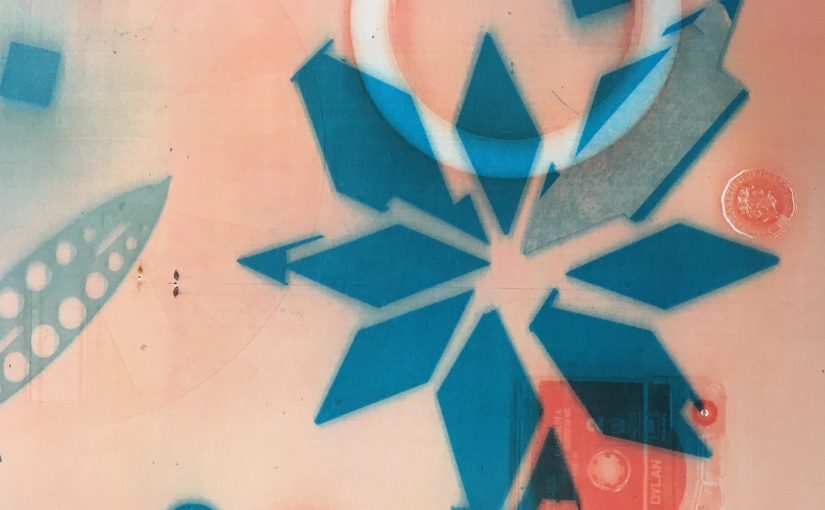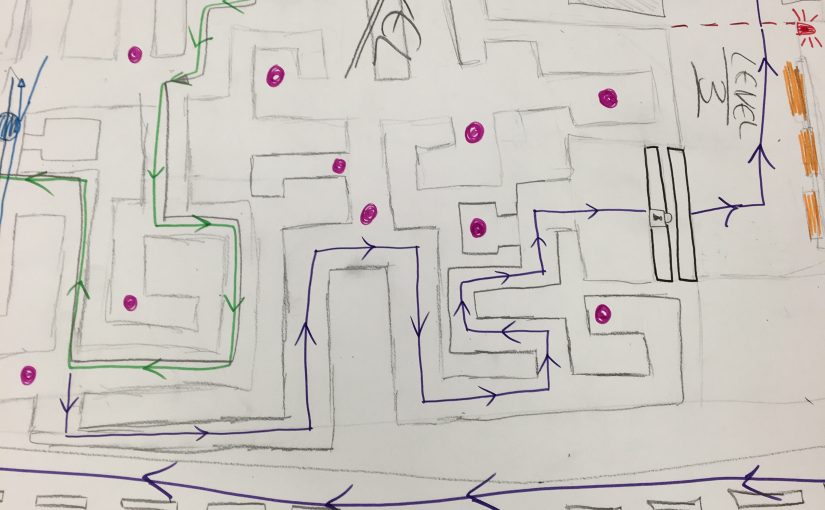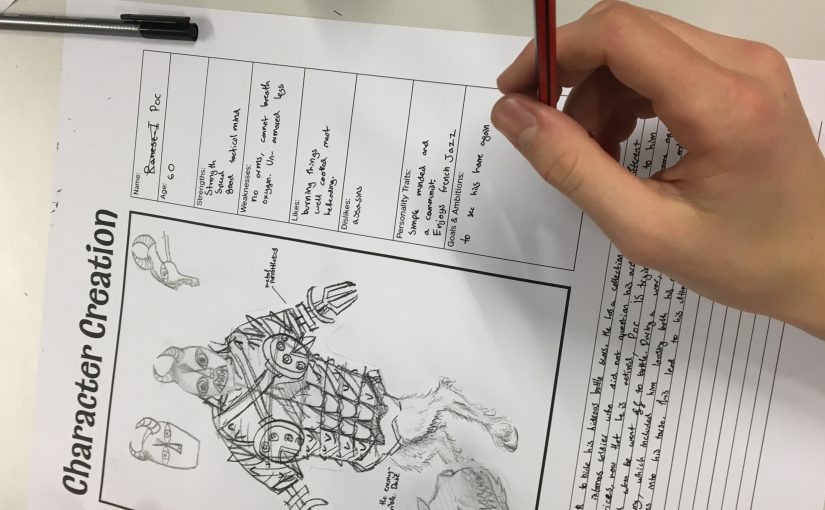Graphic Designer Katie Evans (WSA graduate, current MA student and designer with WSA 3015 studio) led us in a session exploring techniques linked to Risograph printing. We used processes which mimicked the Risograph, getting to grips with the concepts of how you might create an edition or publication.
Using scanners, in built mac cameras, the photocopier (a pretty fancy one) and straight forward cutting and sticking we physically recreated the Risograph process to understand its pro’s and cons.
A set of found objects were given as a starting point and members were divided up into groups and worked their way around ‘stations’ in the room; each had a different set of equipment and a series of action words as prompts.
The groups then had free reign to respond in any way they chose; which ranged from creating 3D sculptures combining cutlery and fruit, to layering their own portraits over photocopied cassette tapes, perspex remnants from the laser cutter and stencilled shapes cut and repeated to form abstract patterns.
The outcomes were so varied and showed us how often having constraints can stop you worrying about outcomes and allow you to focus on exploring the possibilities in the process. Some of the layered single coloured photocopied objects were really very beautiful.
Take a look at our next post when we actually got to use the Risograph itself!



